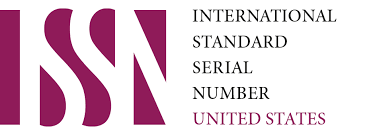38th parallel: The confrontation between the DPRK and the Republic of Korea
Keywords:
Economy, productive, eventually, complicatedAbstract
The Korean Peninsula was at one point in history a single unified entity until World War II happened. The Northern half was under occupation by the communist USSR, and the Southern half was occupied by the US. The occupation and the subsequent Korean War ensured that the two nations would take diverging paths that have set them apart to this day
References
Michael Apple, Official Knowledge: Democratic Education in a Conservative Age (New York: Routledge, 1999); Amy Binder, Contentious Curricula: Afrocentrism and Creationism in American Public Schools (Princeton, N.J.: Princeton University Press, 2004); Ron Evans, The Social Studies Wars: What Should We Teach the Children (New York: Teachers College Press, 2004).
Professor Diana Hess worked with Jeremy Stoddard, then a graduate student, and a team of other graduate students on the first stage of the study analyzing the non-profit and U.S. State Department curricula: Kristen Buras, Ross Collin, Hilary Conklin, Eric Freedman, and Keita Takayama; and with Jeremy Stoddard and Shannon Murto on the second stage focusing on the textbooks.
More detailed descriptions of our findings will be available in Diana Hess, Jeremy Stoddard, and Shannon Murto, “Examining the Treatment of 9/11 and Terrorism in High School Textbooks,” in Educating Democratic Citizens in Troubled Times: Qualitative Studies of Current Efforts, eds. Janet Bixby and Judith Pace (Albany, N.Y.: SUNY Press, forthcoming 2008).
Downloads
Published
Issue
Section
License

This work is licensed under a Creative Commons Attribution-NonCommercial 4.0 International License.
User Rights
Under the Creative Commons Attribution-NonCommercial 4.0 International (CC-BY-NC), the author (s) and users are free to share (copy, distribute and transmit the contribution).
Rights of Authors
Authors retain the following rights:
1. Copyright and other proprietary rights relating to the article, such as patent rights,
2. the right to use the substance of the article in future works, including lectures and books,
3. the right to reproduce the article for own purposes, provided the copies are not offered for sale,
4. the right to self-archive the article.












